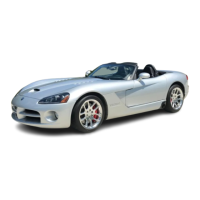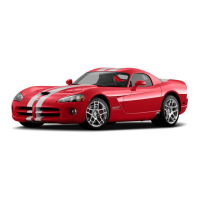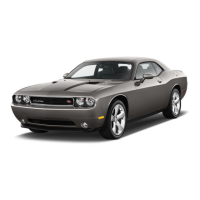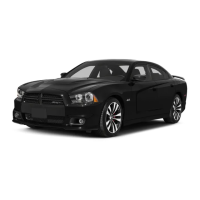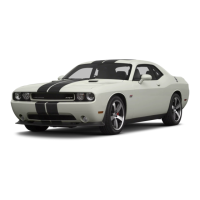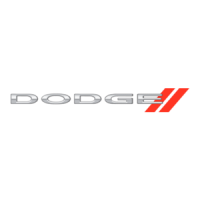
Do you have a question about the Dodge 2013 SRT Viper and is the answer not in the manual?
| Brand | Dodge |
|---|---|
| Model | 2013 SRT Viper |
| Category | Automobile |
| Language | English |
Guidance on navigating and understanding the vehicle owner's manual sections and content.
Important safety notices and advisories regarding vehicle operation and potential hazards.
Details on the unique VIN for identifying the vehicle and its specifications.
Advisories on the impact of vehicle modifications on safety and roadworthiness.
Information on key fobs, keyless ignition, and keyless entry systems for vehicle access.
Explanation of the vehicle's immobilizer system and its operation.
Details on the vehicle's security alarm, including arming and disarming procedures.
Instructions for using the RKE system to lock, unlock, and activate the panic alarm.
Information on power door locks, auto-lock, and auto-unlock features.
Comprehensive guide to seat belts, airbags, and child restraint systems for safety.
General safety advice for vehicle operation, including passenger and exhaust gas safety.
Details on automatic dimming, power, and outside mirrors for optimal visibility.
Instructions for adjusting manual and power seats, including height and recline.
Procedure for safely opening and closing the vehicle's hood.
Explanation of headlight switch, automatic headlights, DRLs, and other lighting controls.
Overview of the vehicle's instrument panel components and layout.
Detailed explanation of gauges, warning lights, and telltales on the instrument cluster.
Guide to the EVIC display, its menus, and selectable information features.
Configuration options for Uconnect Access, including programmable features.
Information on Uconnect radio features, iPod/USB/MP3 control, and Bluetooth.
Operation of the automatic temperature control system, modes, and blower settings.
Steps for safely starting the engine, including normal starting and handling engine failures.
Guidance on shifting, recommended shift speeds, and transmission operation.
Explanation of the electronic damping system modes for different driving styles.
Instructions for using the launch control system to maximize acceleration traction.
Safety precautions for acceleration and maintaining traction in slippery conditions.
Guidelines and warnings for safely driving through flowing or standing water.
Information on the power steering system, including fluid checks and operation.
Proper use of the parking brake before leaving the vehicle and safety precautions.
Overview of the dual hydraulic brake systems and brake pad break-in recommendations.
Explanation of integrated systems like ABS, TCS, BAS, and ESC.
Details on tire markings, sizing, safety grades, and general tire information.
Importance of proper tire pressure for safety, economy, and vehicle stability.
Information on the TPMS, including low pressure warnings and service alerts.
Specifications for fuel types, octane ratings, and blend recommendations.
Procedure for adding fuel, including the emergency fuel filler door release.
Information and limitations regarding towing a trailer with the vehicle.
Guidelines for towing the vehicle behind a motorhome or other recreational vehicle.
Information on vehicle ground clearance and cautions for navigating obstacles.
Instructions for using hazard warning flashers to signal an emergency.
Steps to take to reduce overheating potential and safety precautions.
Information on the TIREFIT kit for temporary tire sealing and inflation.
Important warnings and precautions for using the TIREFIT kit safely and effectively.
Step-by-step guide on how to use the TIREFIT kit to seal and inflate a tire.
Detailed instructions for safely jump-starting the vehicle's battery.
Techniques for moving a vehicle stuck in mud, sand, or snow using a rocking motion.
Guidelines and cautions for towing a disabled vehicle, specifying equipment and ordinances.
Identification of key components within the engine compartment for maintenance.
Explanation of the OBD II system, its function, and the Malfunction Indicator Light.
Information on local emissions testing requirements and system checks.
Recommendation to use genuine MOPAR® parts for maintenance and repairs.
Information on the benefits and availability of authorized dealer service.
Required maintenance services and intervals for vehicle longevity and performance.
Guidance on checking engine oil level, selection, and viscosity.
Information on replacing the engine oil filter and recommended filter types.
Guidance on replacing the engine air cleaner filter at recommended intervals.
Information on the vehicle's battery, its location, and maintenance precautions.
Procedure for activating hibernation mode to conserve battery power during storage.
Recommendations for servicing the air conditioning system for optimal performance.
Periodic lubrication of body pivot points and hinges for smooth operation.
Instructions for cleaning and maintaining wiper blades for optimal performance.
Procedure for refilling the windshield washer fluid reservoir.
Importance of maintaining the exhaust system for carbon monoxide prevention.
Guidelines for checking coolant levels, condition, and system maintenance.
Ensuring brake system performance through periodic component inspection.
Procedure for checking and maintaining the brake fluid level in the master cylinder.
Checking and maintaining the manual transmission fluid level.
Checking the clutch fluid level in the master cylinder reservoir.
Checking the axle lubricant level for proper gear oil function.
Recommendations for washing and protecting the vehicle's body from corrosion.
Guidelines for cleaning wheels and trim to prevent corrosion.
Precautionary notes regarding the Aero Group option and front splitter.
Location and function of the power distribution center containing fuses and relays.
Guidelines for storing the vehicle for extended periods to maintain condition.
Bulb number information for interior and exterior lighting components.
Table listing approximate fluid capacities for engine oil, transmission, and coolant.
Recommendations for fluids, lubricants, and genuine parts for various vehicle components.
Overview of scheduled maintenance services required for vehicle warranty and performance.
Detailed schedule of required maintenance intervals based on mileage or time.
Checks to perform each time the vehicle is refueled, including oil and washer fluid.
Monthly checks for tire pressure, wear, damage, and battery terminals.
Maintenance tasks to perform during each engine oil change, including filter and exhaust inspection.
Tips for preparing for service appointments and communicating with service advisors.
Information on contacting authorized dealers and customer assistance centers.
Contact information for Chrysler Group LLC customer support in the U.S.
Contact information for Chrysler Canada customer support.
Details on the terms and provisions of Chrysler Group LLC warranties.
Information on the availability and recommendation of MOPAR® fluids, lubricants, and parts.
Procedure for reporting vehicle safety defects to NHTSA and the manufacturer.
Contact information for reporting safety defects in the US.
Contact information for Canadian customers to report safety defects.
Information on how to order additional vehicle manuals.





